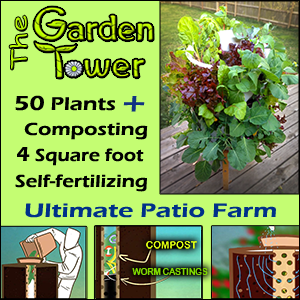Vertical farming is all about maximizing space and efficiency. But sometimes, flexibility is just as important as optimization. While hydroponic systems offer advantages, there are scenarios where transferring plants to soil might become necessary or even strategically beneficial. Are your hydroponic plants ready to put down roots – literally? Let’s dive in!
Think beyond the immediate benefits of your vertical hydroponic setup. Circumstances change – equipment malfunctions, a new opportunity for expanded production, or a desire to experiment with hybrid growing methods. Understanding how to successfully transition plants from hydroponics to soil gives you another valuable tool in your vertical farming arsenal.
Of course, this isn’t a decision to be made lightly. Plants accustomed to the controlled environment of hydroponics will face challenges adapting to the complexities of soil. But with knowledge and careful planning, you can increase their chances of success.
Why Consider Hydroponic-to-Soil Transfer?
While hydroponics is at the heart of many vertical farms, understanding when a soil transfer could be advantageous empowers you to make the best use of your space and resources. Here are some key scenarios to consider:
- Emergency Situations: The greatest plans sometimes fail. Power outages, equipment breakdowns, or sudden contamination of your hydroponic solution can leave you scrambling to save your crop. A well-executed transfer to soil might be the only way to prevent total loss.
- Expanding Production: Vertical farms excel at starting and propagating plants hydroponically. Transferring those hardened-off, healthy seedlings to traditional soil beds or larger containers could be a cost-effective way to scale up production without a massive investment in additional hydroponic infrastructure.
- Experimentation & Diversification: Are you curious about incorporating both hydroponic and soil-based growing methods within your vertical farm? Controlled transfers allow you to explore the benefits of each system, finding the ideal balance, or even discovering new niche crops that perform exceptionally well in a specific environment.
The Key Point: Soil transfer shouldn’t be viewed solely as a last resort. It can be a strategic tool for the adaptable vertical farmer.
The Challenges of Adaptation
Picture a plant coddled in the precision of hydroponics, then abruptly thrust into the wild world of soil. It’s a drastic shift, and the challenges go beyond the immediately visible:
- Root Structure Struggles:
- Delicate Roots: Hydroponic roots are designed for maximum surface area in direct contact with water. They lack the robust structure and tiny root hairs that soil-grown plants use to navigate and mine their environment.
- Drowning Risk: While it sounds counterintuitive, hydroponic roots are surprisingly susceptible to drowning in soil. Used to constant oxygenation, they can suffocate in poorly aerated, waterlogged soil.
- Anchorage Issues: Initially, hydrophobic roots might have difficulty anchoring the plant firmly, especially in loose soil mixes. This can lead to instability and further stress.
- Nutrient Confusion:
- From Buffet to Scavenging: Hydroponic plants are used to nutrients delivered on demand. In soil, they must actively seek out what they need, and the availability of those nutrients fluctuates wildly based on soil pH, moisture levels, and microbial activity.
- Potential Toxicity: Even fertile soil can overwhelm a hydroponic plant with excess salts and minerals, leading to nutrient burn or lockout.
- Microbial Mismatch:
- Where Are My Friends? Hydroponics is a largely sterile environment. Soil, on the other hand, is teeming with bacteria and fungi – some beneficial, some harmful. Hydroponic plants lack the established relationships with the “good guys” that help break down nutrients, protect against disease, and even improve water uptake.
The Visible Impact: Don’t be surprised to see these signs of shock as your plant adjusts to its new reality:
- Wilting: Even with adequate moisture, due to the roots’ reduced ability to initially take up water.
- Yellowing or Browning Leaves: Nutrient deficiencies or imbalances often manifest this way.
- Stunted Growth: The plant is diverting energy to root adaptation rather than putting on new leaves or flowers.
It might feel discouraging, but these are natural hurdles in the transition process. Let’s equip you with the strategies in Section 3 to support your plants and pave the way for their success in the soil!
Strategies for Increasing Success
Knowledge is your greatest weapon for smoothing this transition. By proactively addressing the challenges discussed earlier, you give your plants a fighting chance to thrive in their new soil environment.
- Choose the Right Candidates: Increase your odds by starting with:
- Young, Vigorous Plants: They are more resilient and adaptable than older, established specimens.
- Healthy Specimens: Plants already battling pests or disease are less likely to handle the added stress of transfer.
- Avoid Flowering/Fruiting: Focus on vegetative growth – the plant has enough to handle without the energy demands of reproduction.
- Hardening Off: Don’t rush it! Gradually prepare your hydroponic plants:
- Reduce Feedings: Slightly decrease the frequency and strength of your nutrient solution to encourage stronger root development.
- Lower Humidity: If possible, acclimatize them to a less humid environment, closer to what they’ll experience in soil.
- Soil Selection: The right foundation matters! Choose:
- Well-Draining Mix: Airy, loose soil prevents waterlogging and suffocation of the roots. Amendments like perlite or coco coir improve aeration.
- High-Quality: Invest in premium soil – this is not the time to skimp. It reduces the risk of extreme nutrient imbalances.
- Inoculate with Microbes: Give your plants a headstart!
- Beneficial Bacteria & Fungi: These can be purchased at garden centers and help bridge the gap between sterile hydroponics and the living soil environment.
- Careful Monitoring & Support:
- Watch for Shock: Wilting, discoloration, and slow growth are expected initially.
- Provide Shade: Reduce light intensity for the first few days to minimize stress.
- Water Wisely: Avoid overwatering! Check soil moisture by finger before watering.
Important Note: Be patient. Full adaptation can take weeks, sometimes even longer. Consistent care is key!
When Transfer ISN’T Ideal
Sometimes, the wisest choice is recognizing when the risks of a hydroponic-to-soil transfer outweigh the potential benefits. Let’s look at the specific scenarios where attempting this move could jeopardize your plants and your overall vertical farming operation:
- Plant Intolerance:
- Species-Specific: While some plants can bounce back from the shock of transfer, others are notoriously finicky about root disturbance and drastic changes to their growing medium. Always research the adaptability of your specific crop before proceeding.
- Individual Variability: Even within the same species, some individual plants might be less resilient than others. If you have the option, start with your most vigorous specimens for soil transfer experiments.
- Trouble on Two Fronts:
- Existing Problems: Hydroponic plants battling pests, disease, or nutrient deficiencies are already struggling. Adding the stress of soil transfer can easily push them past the point of recovery.
- The Soil Danger Zone: Unlike the controlled environment of hydroponics, soil can harbor unseen dangers. Exposing a weakened plant to soil-borne pathogens or hidden pest eggs increases the risk of total loss.
- Resource Restrictions: Soil transfer isn’t a “set it and forget it” solution. Consider the following:
- Can You Replicate Success?: Do you have the proper soil, amendments, and beneficial inoculants to create the optimal environment those delicate roots need?
- Post-Transfer TLC: Can you provide the shade, potential humidity adjustments, and close monitoring that are vital in the initial stages of adaptation?
- Time vs. Reward: Is your time better spent trying to restore your hydroponic system, or replacing lost plants, rather than attempting a high-risk transfer?
- The “Why Bother?” Test: If the reason for the transfer is a short-term problem (like a brief power outage), or you have a backup supply of seedlings, weigh the risks carefully. It might be less disruptive to simply maintain your compromised hydroponic system temporarily.
Alternative Strategies:
- Soil to Hydroponics: Depending on your crop, the reverse transition might be a more viable option. This provides the stability to address hydroponic issues and allows plants to recover before reintroducing them to your system.
The Empowered Decision: Choosing not to transfer plants to soil in risky situations isn’t admitting defeat. It’s demonstrating a thorough understanding of the complexities involved and putting plant health at the forefront of your vertical farming strategy.
Conclusion
Understanding the complexities of transferring hydroponic plants to soil gives you another valuable tool in your vertical farming arsenal. While not a guaranteed solution for every situation, it opens up potential pathways for emergency crop salvage, production expansion, and experimentation.
The key takeaway is that knowledge is your greatest ally. By assessing the adaptability of your plants, understanding the challenges they’ll face, and carefully weighing the risks, you can make informed decisions that benefit the long-term success of your vertical farm.
Remember, this isn’t a journey to take alone. The vertical farming community thrives on shared experiences and innovative solutions.
Call to Action:
- Have you successfully transitioned hydroponic plants to soil? What were your key strategies?
- Did you face unexpected challenges or discover surprising benefits along the way?
- What questions still remain about this process?
If you are currently on a hydroponic system and would like to transfer to soil, but want to stay environmentally minded let me recommend the Garden Tower Project. They have everything you need!
Hydroponic-to-Soil Transfers
Q: How long does it take for a hydroponic plant to adapt to soil?
A: This varies greatly depending on the plant species, its age, and the quality of care it receives. Some plants might show signs of recovery within a week or two, while others take a month or longer to fully acclimate. Patience is key!
Q: Is it better to transfer seedlings or mature plants?
A: Young seedlings with vigorous growth are generally more adaptable than mature, established plants. If possible, start your soil transfer experiments with young plants.
Q: My plants are wilting badly after transfer! Will they survive?
A: Wilting is a common sign of transplant shock. Don’t panic. Provide shade, ensure the soil is moist (but not soggy), and avoid fertilizing immediately. If the wilting is severe, you can try creating a temporary “humidity dome” with plastic to reduce water loss from the leaves.
Q: Are there any hydroponic nutrients I can use to help with the soil transfer?
A: While not a magic solution, some mild, seaweed-based fertilizers can act as gentle biostimulants, supporting root development and helping plants cope with stress. Avoid high-nitrogen fertilizers in the early stages.
Q: Can I transfer ANY hydroponic plant to soil?
A: Unfortunately, no. Some plants, like orchids, have highly specialized root systems that simply won’t thrive in a soil environment. Always research the specific needs of your crops before attempting a transfer.



